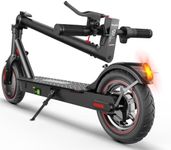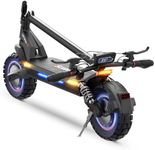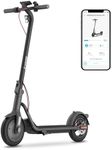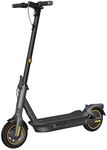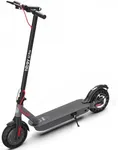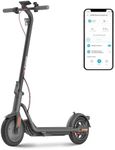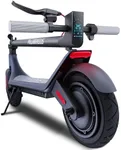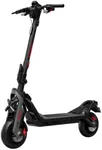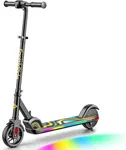Buying Guide for the Best Electric Scooter For Adults
Choosing the right electric scooter for adults can make your daily commute, leisure rides, or quick errands much more enjoyable and efficient. The key is to match the scooter’s features to your lifestyle and needs. Think about where you’ll ride most often, how far you need to travel, and what kind of terrain you’ll encounter. By understanding the main specifications, you can confidently select a scooter that fits your comfort, safety, and convenience requirements.Motor Power (Wattage)Motor power, measured in watts, determines how strong and fast your scooter can go, especially when climbing hills or carrying heavier loads. Lower wattage (around 250-350W) is suitable for flat city streets and lighter riders, offering moderate speed and efficiency. Mid-range motors (350-500W) provide a balance of speed and hill-climbing ability, making them good for mixed terrain and average adult riders. Higher wattage (500W and above) is best for heavier riders, steeper hills, or those who want faster acceleration. Choose a motor power that matches your typical riding environment and your own weight for the best experience.
Battery RangeBattery range tells you how far you can travel on a single charge, usually measured in kilometers or miles. Short-range scooters (up to 15 km/10 miles) are ideal for quick trips or short commutes. Mid-range (15-30 km/10-20 miles) suits most daily commutes and errands. Long-range scooters (over 30 km/20 miles) are great for longer rides or if you don’t want to charge frequently. Consider your daily travel distance and add a little extra for unexpected detours or errands to pick the right range for your needs.
Top SpeedTop speed indicates how fast the scooter can go, usually in kilometers or miles per hour. Lower speeds (up to 20 km/h or 12 mph) are safer for crowded areas and beginners. Moderate speeds (20-30 km/h or 12-18 mph) are suitable for most adults and city riding. Higher speeds (over 30 km/h or 18 mph) are for experienced riders or those traveling on open roads. Choose a top speed that matches your comfort level and local regulations, as some areas have speed limits for electric scooters.
Weight CapacityWeight capacity is the maximum load the scooter can safely carry, including the rider and any cargo. Scooters with lower weight limits (up to 100 kg/220 lbs) are fine for lighter adults, while higher capacities (120 kg/265 lbs and above) are better for heavier riders or those carrying backpacks or groceries. Always pick a scooter with a weight limit that comfortably exceeds your own weight to ensure safety and performance.
Portability (Weight and Folding Mechanism)Portability refers to how easy it is to carry and store the scooter, which depends on its weight and whether it folds. Lightweight scooters (under 12 kg/26 lbs) are easy to carry up stairs or onto public transport, while heavier models (over 15 kg/33 lbs) may be more challenging but often offer more power or range. A good folding mechanism makes storage and transport much easier. If you need to carry your scooter often, prioritize a lighter, easily foldable model.
Tire Type and SizeTire type and size affect ride comfort and stability. Solid tires are puncture-proof and low-maintenance but can feel bumpier on rough roads. Pneumatic (air-filled) tires offer a smoother ride and better grip but may require occasional maintenance. Smaller tires (under 8 inches) are more compact but less comfortable on uneven surfaces, while larger tires (8-10 inches or more) handle bumps and rough terrain better. Choose based on your typical riding surfaces and your preference for comfort versus convenience.
Braking SystemThe braking system is crucial for safety. Electric scooters may have electronic, disc, drum, or foot brakes. Electronic brakes are low-maintenance but less powerful, while disc and drum brakes offer stronger, more reliable stopping power, especially at higher speeds or on hills. Foot brakes are simple but less effective for fast riding. If you plan to ride in busy areas or at higher speeds, prioritize scooters with strong, reliable brakes.
SuspensionSuspension helps absorb shocks from bumps and rough roads, making your ride smoother and more comfortable. Scooters without suspension are lighter and simpler but can feel harsh on uneven surfaces. Front or rear suspension adds comfort for city streets, while dual suspension is best for rougher terrain or longer rides. If you’ll be riding on bumpy roads or want extra comfort, look for a scooter with good suspension.
